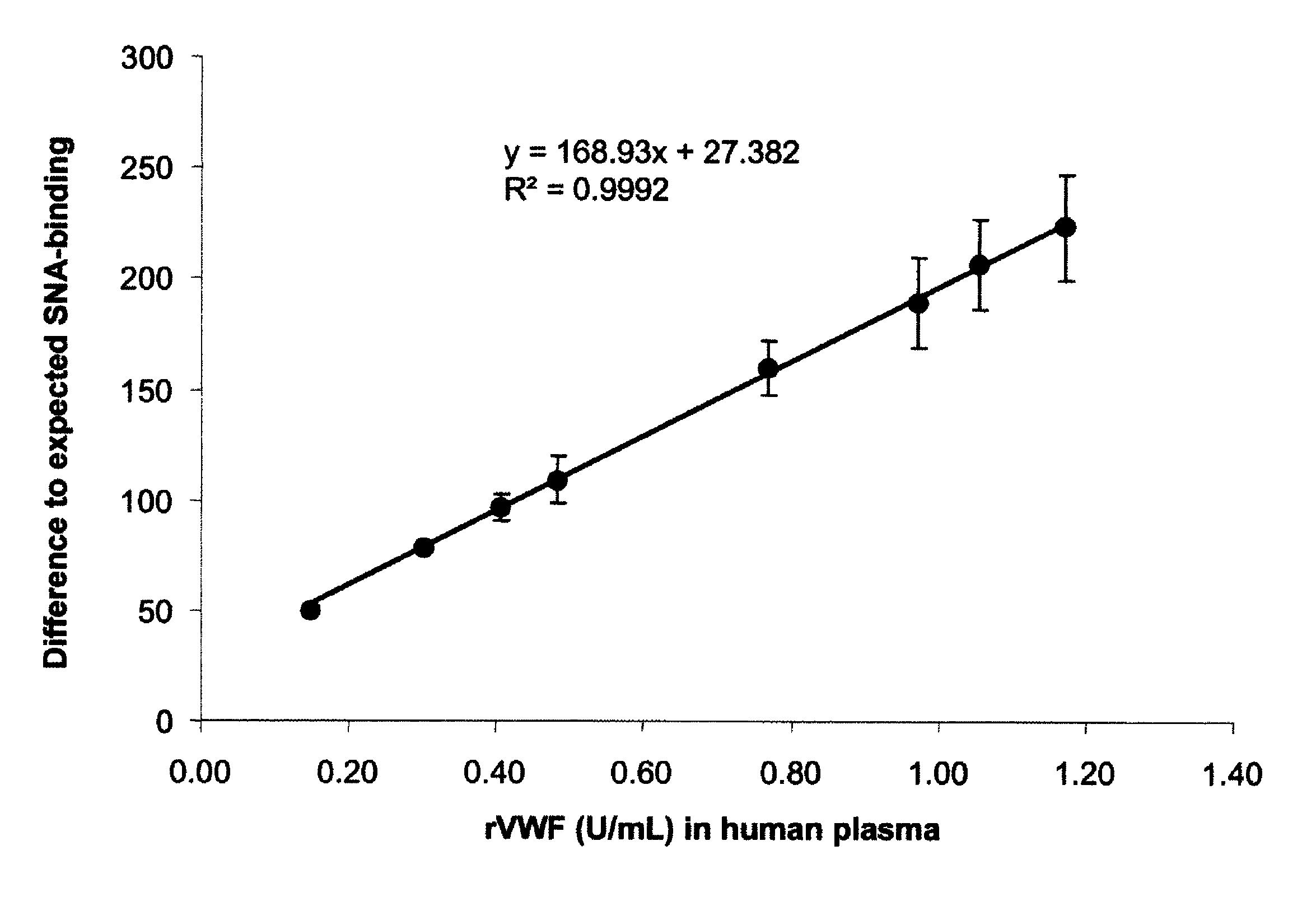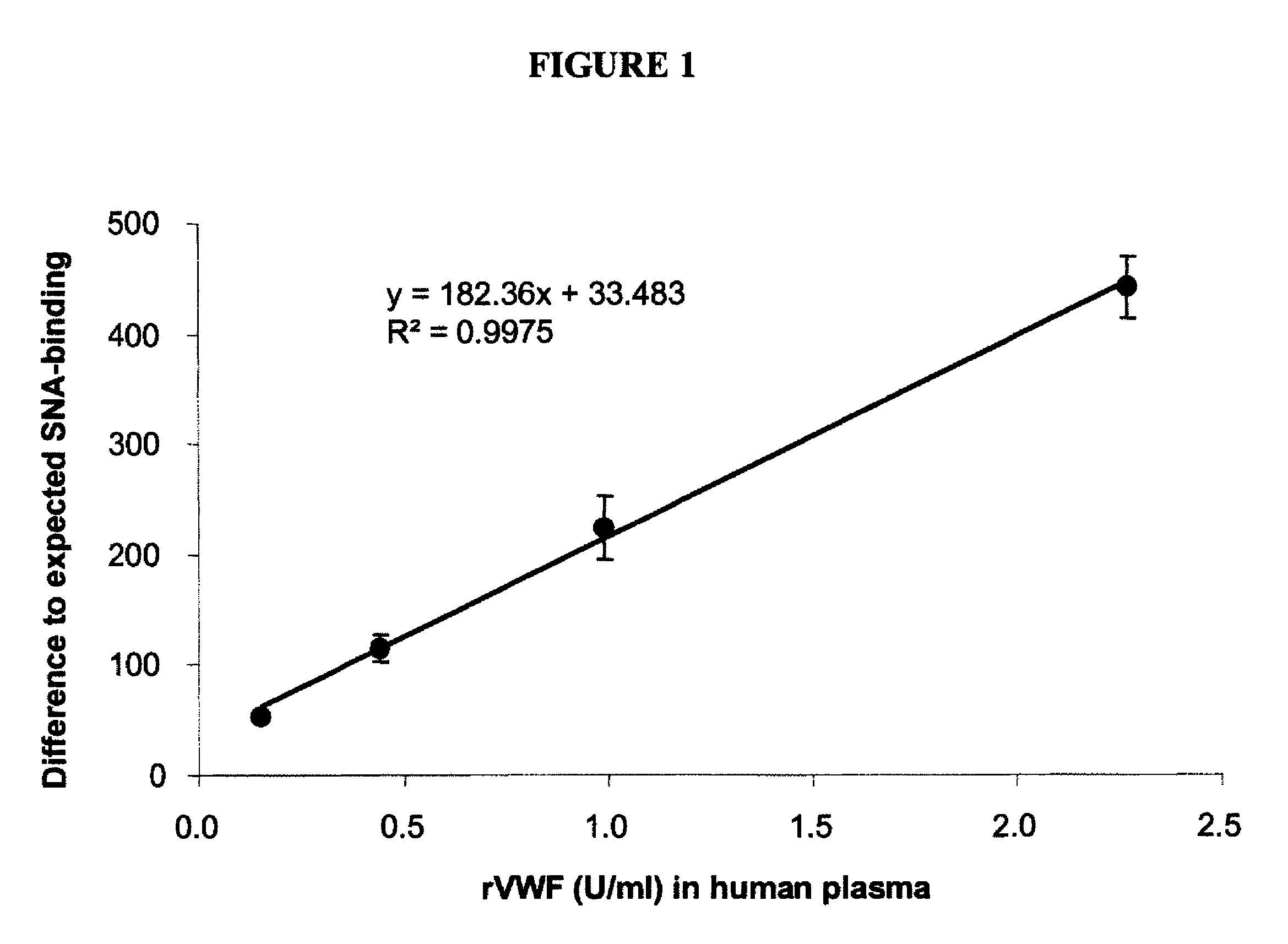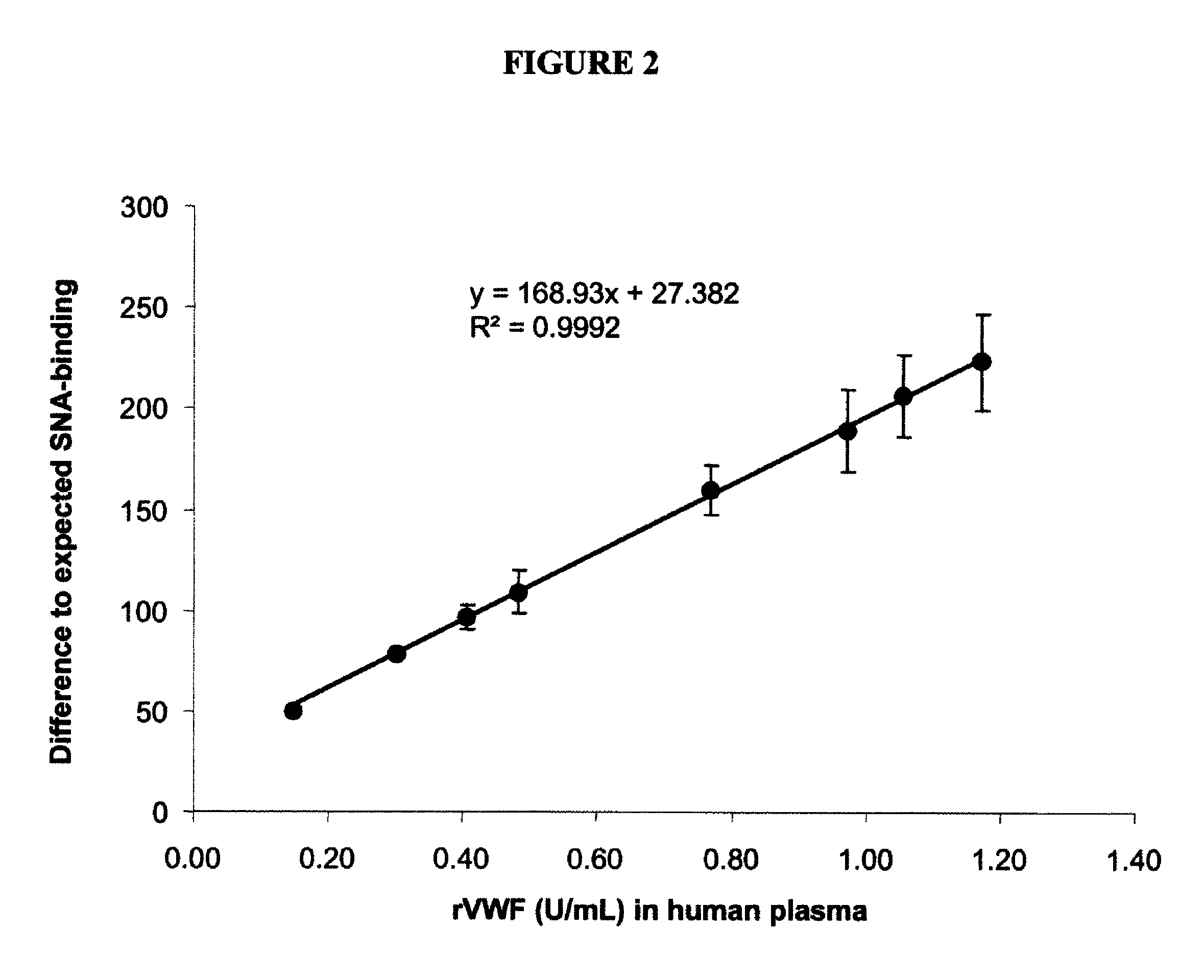Methods for differentiating plasma-derived protein from recombinant protein in a sample
a plasma-derived protein and recombinant protein technology, which is applied in the direction of instruments, peptides/protein ingredients, peptides, etc., can solve the problems of difficult to determine the difference between the endogenous protein and the recombinant protein, and the difficulty of producing sufficient amounts of recombinant protein for human use in a cost-effective manner, so as to prevent non-specific binding
- Summary
- Abstract
- Description
- Claims
- Application Information
AI Technical Summary
Benefits of technology
Problems solved by technology
Method used
Image
Examples
example 1
Sambucus nigra Agglutinin (SNA) Binding of Plasma VWF and Recombinant CHO Cell-derived VWF (rVWF)
[0099]Human proteins express unique glycosylation patterns compared to proteins produced in other organisms, which presents a difficulty when producing recombinant proteins where glycosylation is important in protein function. One of the most popular cell lines for producing recombinant human protein, Chinese hamster ovary (CHO) cells, lacks the enzyme α2,6 sialyltransferase, which confers addition of α2,6-sialic acid onto complex glycoproteins. While this difference may be minimal affect with respect to interfering with activity of a protein, this difference in glycosylation can be used to distinguish recombinantly produced protein or naturally-produced secreted human proteins. Lectin proteins that distinguish between the different glycosylation patterns can be used in binding assays to determine the levels of recombinant or naturally occurring protein in a biological sample. For exampl...
example 2
SNA Binding of Plasma Factor IX (pFIX) and Recombinant CHO-cell Derived Factor IX (rFIX)
[0106]In order to determine if the reactivity of the plasma-derived VWF:Ag with SNA is unique to the plasma VWF, a second CHO-derived blood clotting factor, Factor IX (FIX), was analyzed in an SNA binding assay.
[0107]A polyclonal anti-human FIX antibody preparation was bound to polystyrene microplates as above. For the human plasma pool, a geometric dilution series was prepared in dilution buffer using the dilutions 1 / 320, 1 / 640, 1 / 1280, 1 / 2560 and 1 / 5120 corresponding to FIX:Ag concentrations ranging from 3.09 to 0.19 mU FIX:Ag / mL. The rFIX preparation was investigated at higher concentrations (78-4.9 mU / mL). 100 μL / well were loaded to the wells in duplicates and incubated for 60 minutes at RT, and development carried out as described previously.
[0108]Similar to the results with the plasma VWF protein, there was a clear dose dependent relation between the plasma FIX:Ag concentration and the SNA ...
example 3
Measurement of SNA Binding of Plasma VWF and CHO Cell-derived rVWF After Neuraminidase Treatment
[0109]To ensure that the binding to SNA was specific for SNA, the specificity of the binding to SNA was investigated using the enzyme neuraminidase, which cleaves off or desialylates both α2,6 and α2,3 neuraminic acid from oligosaccharides. After incubating antibody-bound plasma VWF and rVWF with increasing levels of neuraminidase on the microtiter plate, the effects of neuraminidase desialylation on the SNA binding of pVWF and rVWF were measured.
[0110]The anti-VWF microtiter plates were prepared for analysis as described previously. Both the human plasma pool and the rVWF preparation were diluted to obtain VWF:Ag concentrations of 5 mU / mL and 2.5 mU / mL. 100 μL / well of these dilutions were loaded to the coated, periodate-oxidized plates and incubated for 60 minute at RT and washed afterwards. The neuraminidase digest was then carried out on the plate with the plasma-derived vWF and rVWF i...
PUM
| Property | Measurement | Unit |
|---|---|---|
| molecular weight | aaaaa | aaaaa |
| molecular weight | aaaaa | aaaaa |
| molecular weight | aaaaa | aaaaa |
Abstract
Description
Claims
Application Information
 Login to View More
Login to View More - R&D
- Intellectual Property
- Life Sciences
- Materials
- Tech Scout
- Unparalleled Data Quality
- Higher Quality Content
- 60% Fewer Hallucinations
Browse by: Latest US Patents, China's latest patents, Technical Efficacy Thesaurus, Application Domain, Technology Topic, Popular Technical Reports.
© 2025 PatSnap. All rights reserved.Legal|Privacy policy|Modern Slavery Act Transparency Statement|Sitemap|About US| Contact US: help@patsnap.com



